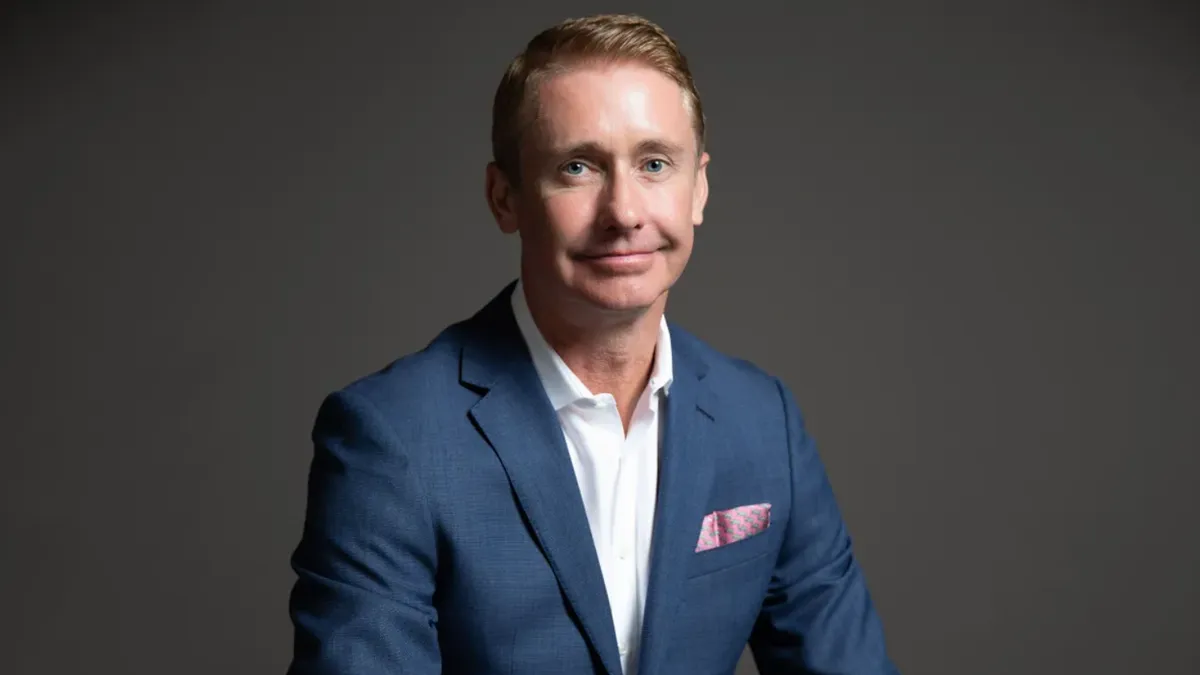Jonathan Rigby had just taken his 10-year-old son, Rex, to his first Yankees game when, hours later, the pair were thrust into a medical emergency. After going to sleep in their hotel room, Rigby was gripped by violent seizures and woke up to find Rex pouring Coca-Cola and glucose tablets in his mouth.
“[It was] because of severe hypoglycemia,” Rigby said. “[Rex] may have saved my life that day.”
Rigby and his family have grown accustomed to these kinds of terrifying experiences. Rigby has type 1 diabetes, and with it, nocturnal hypoglycemia, which can cause blood sugar to plunge overnight. Although Rigby wears trackers and has alarms on his phone, these safeguards don’t always wake him up.
But Rigby has years of experience navigating the disease and was diagnosed at age 18 after falling into a diabetic coma. And as he grew up, Rigby climbed the life sciences ladder, beginning with a sales and marketing stint with Merck & Co., before leading a handful of biotechs.
So when Rigby got the chance to become CEO of Sernova, a clinical-stage biotech company developing a functional cure for type 1 diabetes, he jumped at the chance, first joining the board, then becoming CEO in August.
The problem
With the availability of diabetes management tools, there’s a common misconception that type 1 diabetes is “solved.” Patients have access to insulin, insulin pumps, auto injectors and continuous glucose monitors, but for the roughly 1.8 million adults in the U.S. living with type 1 diabetes and its complications, it’s far from fixed.
“People with diabetes have long-term complications such as heart disease, kidney disease, neuropathy, they have eye problems like retinopathy and macular edema, cataracts,” Rigby said.
Mortality rates for people with type 1 diabetes are significantly higher than the general global population usually because of cardiovascular and renal disease. As many as 1 in 10 patients die from severe hypoglycemia.
"We believe nobody else has achieved this."

Jonathan Rigby
CEO, Sernova
Insulin is only one of the hormones pulling the levers when a patient has diabetes. There’s also glucagon, which raises blood glucose to keep it in the normal range, and somatostatin, which regulates insulin and glucagon.
“We're only giving patients one of the three hormones they need to control their diabetes, and that results in people persistently having high blood glucose, which leads to long-term complications,” Rigby said.
A ‘functional cure’
Sernova’s lead technology, dubbed the “Cell Pouch System,” is a novel implantable device made of porous surgical mesh that becomes vascularized, allowing a surgeon to then transplant human donor islets.
“The cells start to produce not only insulin, but [also] glucagon and somatostatin like a normal pancreas,” Rigby said. “Over time, the cell pouch becomes what we call a ‘biohybrid organ.’”
The company recently announced that seven patients in its phase 1/2 clinical trial have achieved insulin independence.
At baseline, all patients in the study were dependent on multiple daily insulin injections and had a history of severe hypoglycemic events and undetectable plasma levels of C-peptide, which is a marker of natural insulin production.
After the intervention, the patients achieved insulin independence and “freedom from severe hypoglycemic events, sustained HbA1c levels in the non-diabetic range and persistent transplant-mediated insulin production measured by plasma C-peptide,” the company stated.
In September, Sernova said the first patient treated in the trial experienced sustained insulin independence for more than four years.
“We believe this is a world’s first. We believe nobody else has achieved this,” Rigby said. “Also, the biohybrid organ had no fibrosis, and the full, structural integrity of the cell pouch was maintained.”
Raising awareness
Throughout his life and career, Rigby has used type 1 diabetes as a motivator.
“It makes me do things that maybe I wouldn’t have otherwise done,” he said. “I spoke to my doctor and said, ‘I want to start doing triathlons.’ She said, ‘Jonathan, you’re crazy. You’re going to kill yourself.’ And that was a bit like a red rag to a bull to me.”
Not only did he compete in triathlons, he eventually started doing Ironman Triathlons, which consist of a 2.4-mile swim, 112-mile bike ride and a 26.2-mile run.
“I’ve done 11 Ironman Triathlons, and in quite a few of them, I’ve used the opportunity to raise money for children with diabetes [who] couldn’t afford insulin pumps. And I would go do motivational talks to the families,” he said.
Now Rigby is again using his diabetes as motivation to help him clock 101 miles on a rowing machine throughout November to raise awareness for Diabetes Month.
“This mission is close to my heart,” he said. “And even closer to my pancreas.”


















